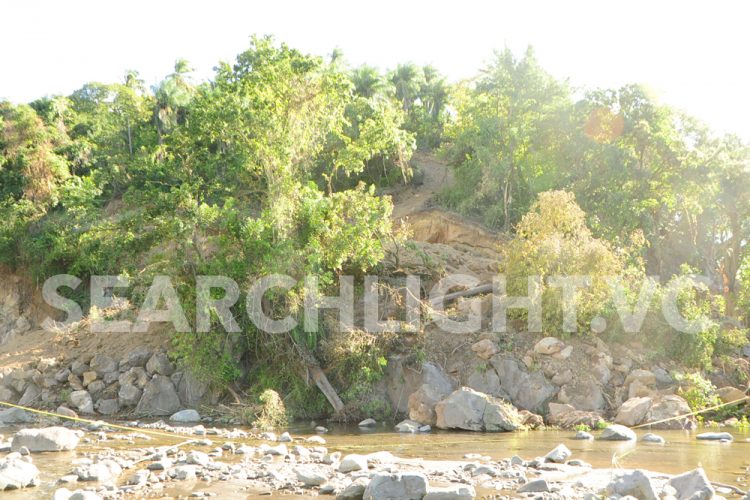2008 Richmond Environmental Assessment Study

by Bria King
A 2008 study identified a number of physical, social and economic factors as being among the major areas to experience the most impact, should quarry operations ever be established in the Richmond area.
More than a decade later, this study is still being relied upon for its insight into the environmental impacts, as St Lucian firm, Rayneau Group of Companies prepares to fully establish operations in the North Leeward community very soon.
The Environmental Impact Assessment (EIA), which was carried out by the Institute for Environmental Research and Technology (InERT), noted two major areas of potential impacts in the study: physical impacts relating to the scarring of the land, water resource management, air quality, deforestation and vibrations; and social and economic impacts as it relates to livelihood, fishing, farming and recreation.
Clearing away vegetation to expose underlying rocks are necessary in the establishment of quarry operations.
According to the EIA, “the blasting and crushing of the rocks produce even more powder/dust that changes the general appearance of the area, reducing air quality and can even decrease visibility. With time, quarry sites stand out as distinct scars on the landscape”.
It also noted that mining operations are notorious for air pollution, given that the associated activities such as earth movement, crushing of rocks and use of explosives produce large quantities of dust that changes the ambient air quality of the area.
“With the best management plan in place, air quality will be compromised. What is important is to determine the tolerance level of the biotic environment and any neighbouring human activities and to ensure that the operational level of particulate matter stays within acceptable levels,” it said.
Though persons have expressed some concern about other factors outlined in the physical impacts, the majority of public discussion has seemingly focused on the social and economic impacts of the stone quarry’s establishment.
Persons who farm in Richmond have, in recent times, raised alarm about the quarry development once preparatory work began on the site.
The farmers, some of whom hold leases with the government, expressed in a meeting with government officials on February 3, that they felt disrespected, not having been consulted about the project.
As highlighted in the EIA, some of the lands being used by these farmers are included in the government’s lease agreement with Rayneau, which will see the St Lucia firm paying $12,000 annually to lease almost 59 acres of land.
But the relevant local authorities have already carried out valuation exercises and announced that all farmers affected will be compensated with individual payouts ranging from $1000 to $40,000.
The EIA also addressed the issue of fishing, noting that Richmond beach is traditionally a recreational area where many Vincentians picnic on public holidays and weekends.
“For many visitors, the first activity on arrival is the catching of fish or crayfish from the surrounding rivers. They then proceed to one of the many designated cooking areas to prepare the meal. There is also the tri-tri harvesting operation which is a well entrenched socio-economic activity that occurs between September and January each year,” the EIA said.
The 2008 document noted that the presence of heavy equipment in or near the river can be a deterrent and the potential for oil spills in the water or on the river bank from the equipment is also real.
It also noted that the quarry operation, by its very presence will add to the reduction of recreational space.
“Additionally, the quarry operation will need to block the footpath along the ridge further curtailing the movement of locals and reducing their hunting ground. Sea bathers in Richmond and Chateaubelair may encounter water turbidity that makes bathing or other forms of water recreation impossible or intolerable,” the EIA said.
The EIA however noted that given the current demand and cost for aggregate for construction, “it is clear that a mining operation will be more economically rewarding than the combined fishing and farming activities”.
The government’s lease agreement for these lands in Richmond is valid for the next three decades.
The 2008 study highlighted that with an estimated 35 year quarry life, “an entire generation of locals can find guaranteed work in their community”.
“Benefits will accrue to nationals not only from direct employment but also from indirect employment in the area of trucking and construction,” it said.
Other impacts listed in the almost 15-year-old document include health and safety, chemical impacts and waste management.
Having been awarded the contract to establish a stone quarry in Richmond, Rayneau Group of Companies is responsible for establishing an Environmental Management Plan to mitigate these potential impacts.
The company’s EMP highlights several mitigating measures, which address air quality, noise, shoreline protection, waste management and the physical environment.
According to Rayneau’s Environmental and Social Management Plan, which is attached to the registered agreement between Rayneau and the government that was signed on April 8, 2021, the entity’s staff is mostly responsible for the monitoring of the mitigating activities with respect to these possible impacts.
In one instance, the Central Water and Sewerage Authority (CWSA), is the entity identified to do quarterly tests as it relates to water contamination.









